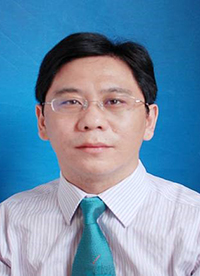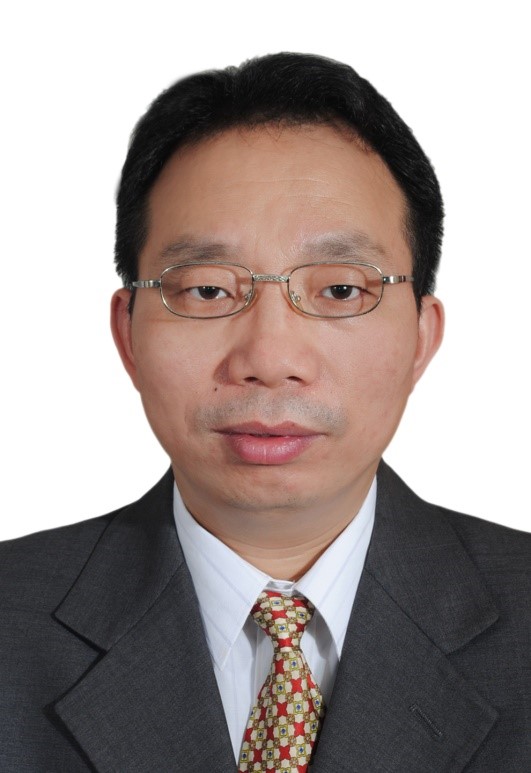

Prof. Ruoxu Du
Fellow, Canadian Academy of Engineering
Fellow, Society of Manufacturing Engineers
Fellow, American Society of Mechanical Engineers
Fellow, Hong Kong Institute of Engineers

Prof. Shengjie Zhao
Fellow, International Academy for Europe and Asia
Fellow,Bell Labs College of Technology, USA
Member of China Invention Association

Prof. Qingsheng Zeng
IEEE Senior Member. Nanjing University of Aeronautics and Astronautics (NUAA), China
Title
The propagation of millimeter wave signals in indoor environments and underground mines
Abstract
Globally, the huge frequency spectrum of 5-7 GHz is allocated as an unlicensed frequency band, and the millimeter wave frequency range of 60 GHz is attractive for future indoor networks. Due to the large available spectrum, very high data transmission rates (approximately a few Gbps) can be reached. Due to the oxygen resonance around 60 GHz, the interference between adjacent networks is small, and it is possible to use wireless sensors to control mining machinery and realize underground communication. Establishing a propagation model of 60 GHz millimeter wave signals indoors and underground is of great significance to achieve the above goals. Most of the existing 60 GHz channel modeling researches calculate the heuristic diffraction coefficients at the corners without considering the surrounding deflection obstacles (DOs) and treating them as noise sources. For multiple-input multiple-output (MIMO) millimeter wave systems, there are very few reports on the measurement of radio wave propagation in underground mines, and the impact of miners’ activities on millimeter wave propagation is not considered. This keynote report evaluated the importance of deflection obstacles (DOs) in indoor wireless local area network (WLAN) applications in the 60 GHz frequency band, discussed the propagation characteristics of multiple input multiple output millimeter wave systems in underground mine environments, and considered the impact of miners’ activities.

Prof. Jin Xu
Chongqing Jiaotong University, China
Title
Behavior characteristics and simulation of vehicle travelling on hairpin bends of mountain roads
Abstract
Hairpin bend is one of the common sections in mountainous roads, especially the low-grade roads in difficult mountainous areas; In addition, hairpin bends are typical scenes of all kinds of car and motorcycle tracks. Compared with the track, the vehicle operation parameters and driving mode in hairpin bend section of mountain roads have not been clear. According to the naturalistic driving data, the reporter analyzed the operation process of the vehicle in the hairpin curves, defined the behavior characteristics of the driver in the hairpin curves, and driving patterns were recognized. The contents of the report may be helpful for road design, driving behavior simulation and vehicle simulation.

Prof. Qizhou Hu
College of Automation, Nanjing University of Science and Technology, China
Title
Feasibility Study of Super-Speed Rail
Abstract
Super-Speed Rail is a kind of vehicle that designed based on the theory of "vacuum pipeline transportation", and it has the advantages of ultra-high speed, high safety, low energy consumption, low noise, no vibration and no pollution. Super-Speed Rail may be a new generation of vehicles after cars, ships, trains and airplanes. Super-Speed Rail system includes two parts that vacuum pipe technology and magnetic levitation technology. Basic structure and attribute characteristics of Super-Speed Rail, this is aiming to solve the main problems of Super-Speed Rail, and discuss the feasibility of Super-Speed Rail.

Prof. Shaojiang Dong
Chongqing Jiaotong University, China
Title
Research on Failure Mechanism Analysis and Life State Identification of Space Rolling Bearings
Abstract
The operating environment of the space rolling bearing is extremely harsh, which is quite different from the global environment. For example, high and low temperature, strong radiation, high-speed moving dust particles (unstable load), etc. will affect the performance of the bearing, and the main failure mode is accuracy failure. The key factor affecting bearing failure and life is the solid lubricating film. Excessive wear of the film means the dry friction of the rolling parts, leading to the failure of bearing accuracy. Due to the comprehensive effects of the complex space environment, the failure mechanism of the film is complex, and the effective signal will be submerged in the noise. The separation and extraction are extremely difficult, and the lifetime assessment is difficult. At present, a set of systematic theories and methods have not been formed. Relevant research work has been carried out on the failure mechanism, dynamic modeling and life state of space rolling bearings, focusing on the bearing failure mechanism under environmental action, the establishment of angular contact dynamic model and the identification of failure frequency spectrum, the identification of life state, etc. Work, study the "environmental factors-failure mechanism-micro and macro coupling-alternating lubrication-failure spectrum-bearing life" multi-ring factor leading bearing failure mechanism and wear spectrum identification method, establish a cross-micro and macro scale multi-physical body linkage analysis Mechanism, to achieve accurate prediction of bearing life, and finally form a set of space solid lubrication bearing failure analysis and life prediction theories and methods, which has important economic and social benefits.

A. Prof. Junyang Li
Chongqing University, China
Title
Research status of key technologies of industrial robot core basic components at home and abroad
Abstract
Harmonic and RV reducers are the core basic components of the robot, accounting for more than 35% of the total cost. With the strong support of relevant national departments, the localization problem has been basically solved, but it is still facing poor international competitiveness.The situation of foreign monopoly, on the other hand, the new generation of intelligent robots has requirements for the performance of the reducer. Based on the original performance requirements such as high speed ratio and high precision, new requirements such as variable stiffness, self-sensing, and rapid response are proposed.However, the rigid joints formed by harmonics and RV reducers have poor adaptability to the non-structural environment, so new intelligent reducers are urgently needed to be developed.The report focuses on scientific issues such as the dynamic service behavior and control principle of the robot reducer under complex environmental conditions, the coordination mechanism of the deformation flexibility of the rigid-flexible composite transmission and the stiffness of the supporting load, and the high dynamic adaptive response mechanism of the variable-rigidity transmission in the unstructured environmentIntroduce the domestic and foreign research status of interdisciplinary design theories and methods such as meshing theory, tribology, dynamics, functional materials and intelligent control.

Prof. Chunjun Chen
Southwest Jiaotong University, China
Title
Review of the mechanism and control technologies for the internal pressure fluctuation of a high-speed train
Abstract
When the high-speed train passes through the tunnel at a high speed, a complex air flow will be generated and then formed an intense tunnel pressure wave. The tunnel pressure wave will induce into the carriage through the car body and cause a fluctuation inside the high-speed train carriage, and further result in the discomfort of the passengers. Thus, the effective control for the internal pressure of the high-speed trains is of great importance, in order to optimize the riding comfort of the passengers. This report will focus on the formulation of the tunnel pressure waves, the mechanism and the modelling of the internal pressure fluctuation of high-speed trains, the development of control strategies, the active and passive control technologies and integrated control technologies combining iterative learning control theorem and artificial intelligence.

A. Prof. Wenbin Gu
Hohai University, China
Title
Real-time Data-driven Dynamic Scheduling for Smart Job Shop Problem
Abstract
With the increasingly fierce competition in the global market, manufacturing enterprises are faced with more stringent requirements in improving production efficiency, improving product quality, reducing resource consumption and reducing production costs. To enhance the competitiveness of manufacturing industry and expand the international market, countries have formulated corresponding national strategies, such as Industrial Internet in the US, Industry 4.0 in Germany and Made in China 2025. These strategies can help industry realize smart manufacturing through the application of various advanced technologies in the manufacturing field. Among them, the rapid development of Internet of things (IoT) and other new information technologies provides rich real-time data for manufacturing system. Data-driven manufacturing is gradually becoming the main means to realize smart manufacturing. But what exactly is the smart shop floor? How to structure the smart shop floor via the IIoT technology? How to make use of the production status data to quickly and dynamically schedule the complex production process in the shop floor? Based on this, the research group has carried out some meaningful research and exploration on the dynamic smart job shop scheduling problem.

A. Prof. Zhongliang Lv
Chongqing University of Science and Technology, China
Title
Key technologies of visual force measurement and their integrated applications
Abstract
Aiming at the forefront of the intelligent manufacturing discipline, conducting in-depth research on machine vision analysis and systems (smart camera front-end system, robot eye-hand follow-up system, mechanical measurement image algorithm library and its simulation simulation and automatic programming environment platform, etc.), and put forward the "robot +Inspection" large field of view, high-precision mechanical size measurement system and method, establish vision measurement smart camera and "eye in hand" control and measurement algorithm model. Develop core products with independent intellectual property rights that integrate visual measurement and force perception: light curtain axis diameter sensors, smart cameras based on NYZQ and OpenCV platforms, three-axis motion controllers based on visual measurement and force perception, and planar target-based Attitude measurement technology and V3D automobile four-wheel alignment instrument, based on static image definition measurement method and intelligent focusing machine, new automotive four-wheel alignment visual measurement products, camera module automatic focusing machine, vision-guided automatic packaging machine, light curtain type High-end intelligent equipment such as high-precision size measurement sensors and underwater three-axis follow-up self-stabilization systems have been successfully applied to more than 10 companies in the military equipment, automobile and motorcycle industries, and laptop industries.